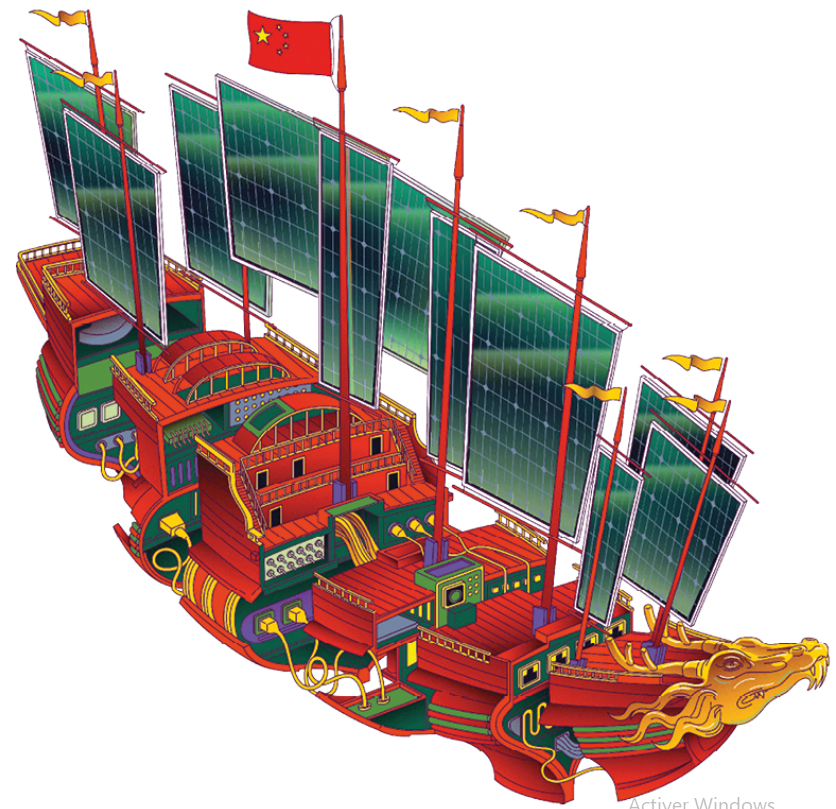L R AS Published on Sunday 11 February 2024 - n° 473 - Categories:China
Chinese exports in 2023

China exported 16 GW of panels in December 2023, down 9% on November's 18 GW, but up 50% year-on-year. Despite the build-up of stocks this year, the markets have been buoyant.
Imports in the fourth quarter at the same or slightly lower levels than in the previous three quarters: India and Brazil have replaced the United States and Europe as the world's main importers. In 2023, the world imported 208 GW of panels, an increase of 34% year-on-year compared with 154.8 GW in 2022.

Europe
In December, Europe imported around 5 GW of panels from China, up 4% on November's 4.9 GW, but down 14% year-on-year. In 2023, Europe imported 101.5 GW of panels from China, 17% more than the 86.6 GW in 2022.
According to InfoLink, stocks are running out fast, as some countries have begun to redirect their exports to other markets. Distributors are increasingly determined to obtain supplies, given the geopolitical risks associated with the Red Sea issue.

The rapid depletion of stocks will encourage Europe to replenish its supplies in advance. With shipping times from China to Europe having been cut from 10 to 15 days, the panels exported at the end of last year should arrive in Europe in the first quarter of 2024. In addition, Europe has been importing mainly TOPCon panels since the end of 2023.
Imports to Europe will not jump significantly in the first quarter of 2024 as they did in the same period last year, but could remain at the same level or fall slightly below those of the low season in the fourth quarter of 2023.
As the price of electricity fell to a relatively low point of €84/MWh last December, this could affect residential demand for photovoltaics.
In mid-January, FOB spot prices for TOPCon panels were in the same range as in December 2023, between $0.11 and $0.13/W, while average FOB prices fell slightly from $0.13/W to $0.12/W. Panel prices continue to reach new lows and will have limited scope for further declines. Panel manufacturers are considering adjusting CIF, DDP and DAP prices for exports to Europe, given the rise in brewing industry supply chain prices and the increase in freight rates to €0.011-0.015/W in mid-January.
Asia Pacific imported 6.6 GW in December (+206% on December 2022) and 54 GW over 2023 (+71% in one year).
The Americas imported 30 GW in 2023 from China, up 22% on 2022 (25 GW in 2022).
InfoLink 30 January 2024
Editor's note Clearly, Europe is a vast warehouse for Chinese manufacturers' solar panels. After 2022, when there were twice as many imports as installations on the Old Continent, it's back to business as usual in 2023, with 56 GW installed and 101 GW delivered. European manufacturers are complaining about the particularly low prices coming from Chinese surpluses. So much so that three manufacturers (among the largest) are warning the European Commission that they will leave the European market if nothing is done to protect them.
To keep them waiting, the NZIA has been invented, a gas factory designed to protect the European market against its own manufacturers: if a country buys less than 6 GW, there is no protection against imports. If there are public auctions, 30% of the auction volume will be reserved for European manufacturers. If there are direct sales, Chinese manufacturers will be able to do whatever they want to offer low prices, rebates and circumventions. In the language of the Eurocrats, this is called protecting European manufacturers.
To try and ease the pressure from China on the European market and their deliveries of double the installations, some have invented the fable of European shipments abroad, which would have reduced the pressure on the European market. Some still believe in this artifice, without providing the slightest beginning of proof, in order to absolve Chinese industrialists of their commercial pressure. We would have hoped that those who put forward this argument would be a little more serious and that their assertions would be backed up by figures.
If three companies representing 52% of European panel production are issuing an ultimatum to the Commission, then the situation is serious and the inertia of this administration has gone beyond all bounds.




